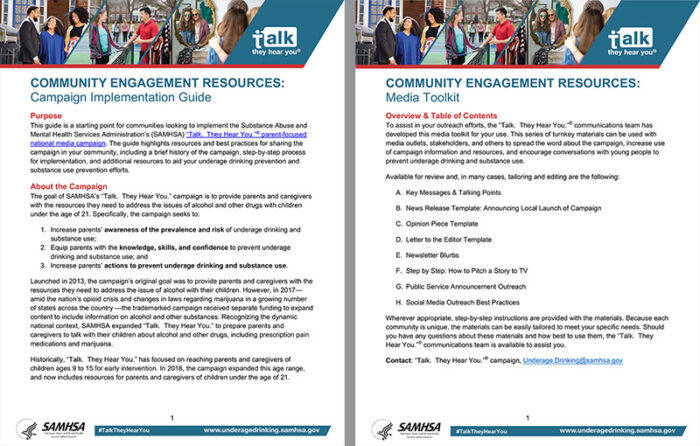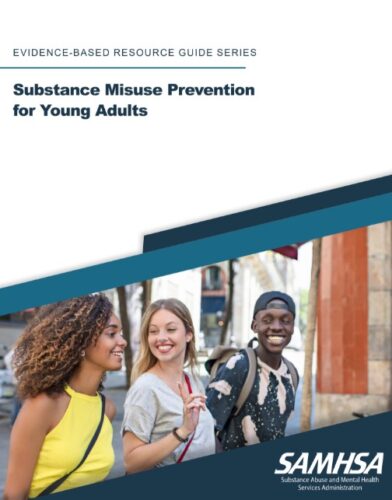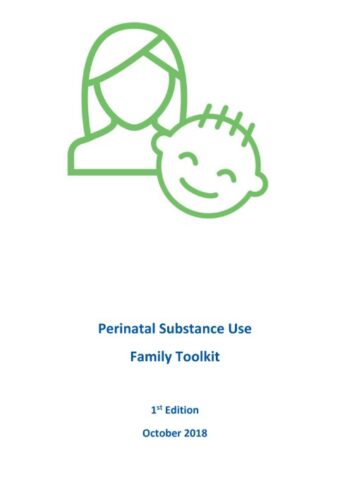School Based Screening, Brief Intervention, and Referral to Treatment (SBIRT)
A comprehensive public health approach is used to refer adolescents to treatment.
School-Based Health SBIRT Quick Guide
Substance Use Screening
Screening, Brief Intervention, and Referral to Treatment (SBIRT) is an evidence- based approach to the screening and identification of individuals engaged in substance use, the delivery of early brief interventions in order to reduce use, and the referral to treatment for high-risk use. The California School-Based Health Alliance (CSHA), with funding from the California Youth Opioid Response Grant, created this quick guide for SBIRT in school-based health centers (SBHCs) in an effort to reduce youth opioid use. This quick guide focuses on screening.
Why screen for substance use?
Nationwide, 9.6 percent of youth age 12-17 report having used alcohol in the previous month, and 8.8 percent report past-month drug use.1
Fourteen percent of high school students have misused an opioid prescription.2
The majority of people with a substance use disorder (SUD) started using before age 18 and developed their disorder by age 20.3 Because of their early initiation, youth who use substances are at increased risk for health, educational, and social challenges related to alcohol and drugs. SBHCs are ideal places to identify these youth and provide evidence-based services that inform them about the health risks associated with alcohol and drug use, motivate them to change their behaviors, and support them in addressing the concerns that may be underlying their substance use.
Using brief, structured, and scientifically validated screening protocols can improve service providers’ capacity to identify youth who are using alcohol or drugs.4 Screening is important since youth may continue to do well in school and in other areas of life despite severe SUD.
School-Based Health SBIRT Quick Guide Substance Use Screening
This service is supported by a federal grant under the State Opioid Response program, with funding provided by the California Department of Health Care Services. The California School-Based Health Alliance and the University of California, Los Angeles’ Integrated Substance Abuse Programs (UCLA ISAP) adapted a resource from UCLA ISAP’s Adolescent SBIRT Briefs that were part of the Conrad N. Hilton Foundation’s Substance Use Prevention initiative.
Screening tools are not intended to diagnose if youth have a SUD or determine the severity of a youth’s substance use. Rather, they can quickly indicate if youth are using alcohol and/ or drugs, and alert providers that they need to have a more detailed conversation with the young person to get more information about their use.
What is the best way to screen?
The most practical way to screen for substance use is through the use of questionnaires or clinical interviews. Research shows that youth are willing to self-disclose when asked about alcohol and drug use.6
Two screening tools specifically designed for youth are the CRAFFT and S2BI. These screeners are highly recommended because they:
• Collect information about both alcohol and drug use
• Have strong research support
• Are available for free
• Are quick and easy to use (3-9 questions, depending on responses)
• Have publicly available websites that providers can refer to for guidance and practical tips (see resources section at the end)
What are best practices when implementing screening?
When should we screen?
Screenings should begin at age 12. Ideally, all youth would receive regular screenings for substance use, and the American Academy of Pediatrics recommends that all youth should receive screening at every medical visit (no more than monthly). Some screening tools were created to be administered at every visit (e.g., the CRAFFT) and some were created to be administered annually (e.g., the S2BI).
How should we screen?
The CRAFFT and S2BI can be self-administered by youth, either on paper or electronically on computers, tablets, or phones. Having youth complete screening tools themselves instead of conducting face-to-face interviews for screening has several advantages: youth prefer self-administered tools, they are more likely to disclose sensitive information, and it can save staff time. Digital screening is preferable but paper is also effective. Screening tools can also be included with other intake forms.
Who should administer the screening and where should it be administered?
Screening should be administered in a confidential space. Front desk staff can administer it while the young person is waiting for their appointment, medical assistants can administer it in the exam room before the provider arrives, or a behavioral health provider or health educator can administer it in their office. Wherever the screening takes place, try to ensure the space allows for confidentiality.
Who should record and calculate the screening?
The front desk staff, medical assistant, health educator, or provider can record and calculate the screening results in the patient’s chart.
- If the SBHC is utilizing paper charts, the results can be calculated at the bottom of the screening and the screening can be added to the paper chart or the provider can record the results in their chart notes.
- If the SBHC is utilizing an electronic health record (EHR), some EHRs have the CRAFFT or S2BI screening built into the EHR. If this is the case, the screening results can be entered into the EHR and they will be automatically calculated. If an EHR does not have the screening built in, the provider can record the results in their notes in the EHR. Staff time and confidential space are important considerations for determining who will take the lead on calculating and recording the results.
Who should interpret the screening results and how should the results be shared with the young person?
The provider (medical, behavioral health, or health education) should interpret the screening results and share the results with the young person while they are in a private room. How the provider shares the screening results depends on the outcome:
- For negative screens (for example, a CRAFFT score of 1), the provider should deliver positive affirmations that encourage youth who are not using substances, as encouragement can help reinforce positive choices that youth make.
For example:
-“It’s great that you are choosing not to use alcohol or drugs. Have you ever been offered?” If yes, follow with: “What happened and how did you decide to say no?” If no, follow with: “That’s great. It could happen in the future so it’s good to be prepared and think through what you would do.”
- “Avoiding tobacco, alcohol, and drugs is an excellent choice — it’s one of the best ways to protect your health. Can I provide you with some information on how alcohol and drugs can affect you over time?”
- “There may be times when alcohol and drugs seem tempting, especially at your age. I’m proud of you for making a tough choice that can also positively affect your health.”
- For positive screens (for example, a CRAFFT score of 2 or higher), the provider should move to the second part of SBIRT: brief intervention.
What should I do now?
• Share this quick guide with colleagues. Raise awareness about SBIRT and reduce stigma
about SUDs in the adolescent primary care community.
• Select and obtain a screening tool.
• Determine how you will administer the screening tool.
• Determine the workflow and train all staff.
• Make a plan for brief interventions.
Key Resources
National Council for Behavioral Health, Improving Adolescent Health: Facilitating Change for Excellence in SBIRT, for guidance on using SBIRT: bit.ly/NCBH-FaCES
Boston University Center for Adolescent Substance Abuse Research, for tools and support on using the CRAFFT Screening Tool: crafft.org/
Massachusetts Child Psychiatry Access Project, Adolescent SBIRT Toolkit for Providers, for guidance on using the S2BI Screening Tool: http://bit.ly/MCPAP-S2BIToolkit
Conrad N. Hilton Foundation and UCLA’s Integrated Substance Abuse Program, Screening Overview page, with resources on screening for adolescent substance use: www.
adolescentsubstanceuse.org/screening-overview/
University of Washington Alcohol and Drug Abuse Institute, Substance Use Screening &
Assessment Instruments Database: lib.adai.washington.edu/instruments/
Works Cited
1.Center for Behavioral Health Statistics and Quality. (2016). Key substance use and mental health indicators in the United States: Results from the 2015 National Survey on Drug Use and Health (HHS Publication No. SMA 16-4984, NSDUH Series H-51). Retrieved from http://www.samhsa.gov/data/
2.Kann L., McManus T., Harris W. A., et al. (2018). Youth Risk Behavior Surveillance — United States, 2017. MMWR Surveill Summ 2018, 67(SS-8), 1–114. Retrieved from: http://dx.doi.org/10.15585/mmwr.ss6708a1
3.National Institute on Drug Abuse. (2014). Principles of Adolescent Substance Use Disorder Treatment: A Research-Based Guide. Retrieved from: https://www.drugabuse.gov/publications/
principles-adolescent-substance-use-disorder-treatment-research-based-guide/introduction
4.D’Souza-Li, L., & Harris, S. K. (2016). The future of screening, brief intervention and referral to treatment in adolescent primary care: research directions and dissemination challenges. Current Opinion in Pediatrics, 28(4), 434-440.
5.AAP Committee on Substance Use and Prevention. (2016). Medication-Assisted Treatment of Adolescents with Opioid Use Disorders. Pediatrics, 138(3).
6.Mitchell, S. G., Gryczynski, J., O’Grady, K. E., & Schwartz, R. P. (2013). SBIRT for adolescent
drug and alcohol use: Current status and future directions. Journal of Substance Abuse
Treatment, 44(5), 463-472.
7.Conrad N. Hilton Foundation. (n.d.). Improving Adolescent Health: Facilitating
Change for Excellence in SBIRT. Retrieved from: https://www.ysbirt.org/wp-content/
uploads/2019/09/092519_NCBH_SBIRT_v8_Final.pdf
Related Posts
Community Engagement Resources
Various tools and documents that will support SUD providers with proper languages, media involvement, and overall techniques to use when engaging with the community.
Substance Misuse Prevention for Young Adults
This guide discusses effective prevention practices to mitigate risk factors associated with substance misuse and promote protective factors among: all young adults generally; young adults at significantly higher risk for substance misuse; and young adults who are not diagnosed with a SUD but are engaging in substance misuse.
Perinatal Substance Use: Family Toolkit
This booklet provides tools you need to be as healthy as you can be during pregnancy, whether or not you decide to stop using.


